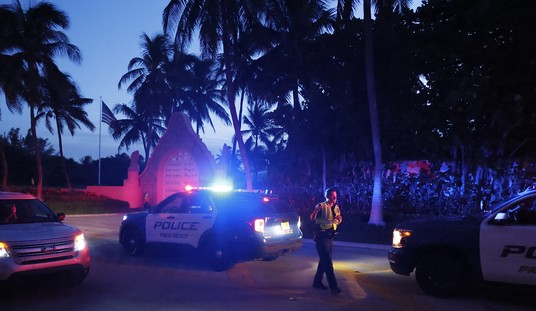Opponents of drilling for oil in the Arctic National Wildlife Refuge suggest that developing new oilfields there would damage wildlife and the environment. Sadly, few of those opponents have ever seen ANWR in person, and even fewer have seen the remote, empty coastal plain where drilling would actually occur. It takes an eyes-open trip to this region to clearly see why those opponents are wrong, and why we can no longer afford to block ANWR drilling as gasoline touches five dollars per gallon. This weekend, myself and 10 other colleagues had the privilege of embarking on such a trip.
Flying over ANWR’s coastal plain, I could only think of one word to describe it: barren. On the particularly small section where abundant oil rests, there are no mountains and no trees, just a flat frozen tundra. The photos of a wondrous, pristine national park, often displayed by drilling opponents, are taken miles to the south, far from any future drilling location. Having been to the more picturesque locations in ANWR, teeming with wildlife and beautiful scenery, I can tell you that the proposed drilling site looks nothing like this.
Under this barren land lies ten billion barrels of recoverable oil. Eighty miles to the west is the famed Prudhoe Bay oilfield, which at one point was supplying some 25% of all our domestic oil production. The ANWR coastal plain holds a similar potential if we have the will to explore and develop it. If we don’t, we will continue to rely on foreign oil for far too large a share of our ever-growing energy needs.
Drilling opponents love to float myths about what would happen to ANWR if we opened it to energy production. Happily, there are some real facts that put those myths to rest. For example, there are 19 million acres in ANWR. However, proposed drilling would only take place on about 2,000 acres of barren coastal plain – the size of a postage stamp on a football field. That’s how much of ANWR would actually be drilled to reach the vast pools of oil that lie underneath it.
Many citizens have posed reasonable questions about the threat that energy production may have to wildlife. After speaking with native Alaskans as well as people in numerous government agencies, I know the experts feel as I do – that responsible measures can be taken to protect our wildlife while drilling for oil. Furthermore, wildlife is scarce in the area of ANWR where drilling has actually been proposed. We saw no caribou or polar bears in this part of the frozen tundra. At Prudhoe Bay, where drilling started 30 years ago, wildlife is thriving. In fact, caribou populations have increased dramatically in that region. I saw caribou walking right along the oil pipeline, and locals warned us of polar bears lurking next to parked vehicles. In that region, like elsewhere in the United States and all over the world, wildlife and modern technology are peacefully coexisting.
Recommended
Is drilling in ANWR the sole answer to our looming energy crisis? Of course not. Our Congressional delegation also visited the National Renewable Energy Laboratory operated by the Department of Energy in Denver. Scientists and engineers there are doing vital research into solar and wind power, hydrogen fuel cells, hybrid vehicles and much more. We support those efforts, along with every reasonable conservation measure to reduce energy use.
But the stark fact about America’s energy picture in mid-2008 is that we are years away from replacing our large dependence on fossil fuels like oil and gas. If you doubt that, go out into the parking lot and count the wind and solar powered cars.


